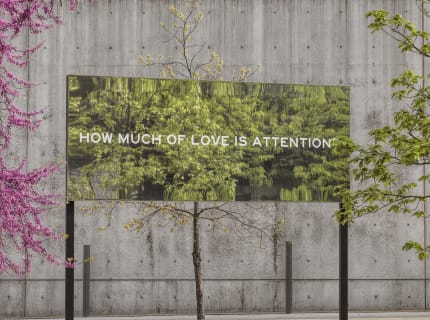Amid sustained calls for artists and institutions to consider art’s role beyond the museum’s walls, social practice art has emerged as a burgeoning field of inquiry for considering community, context, and art’s ability to affect real change. Begun in 2010 as a collaboration between the Queens Museum and Queens College, City University of New York, Social Practice Queens combines the dynamics of art practice with the rigors of an education in the social sciences. At its core, the program offers instruction in a medium that adopts progressive justice and collectivity not just as principles but as outcomes. Here, Social Practice Queens professors Chloë Bass and Gregory Sholette discuss the ethics of higher art education in New York’s most diverse borough and abroad, teaching optimism, and the circumstances that precipitated the social turn.
Chloë Bass: For me, there is also a real question in my classroom, and throughout my own artistic work and writing as well, about how, where, and by whom history is made. I’ve spent a lot of time investigating everyday materials not as the most meaningful in an optimistic, labor-centered way, but as most meaningful because they are, in fact, the most prevalent. Yet, as we know, the everyday is rarely what “makes history,” neither in terms of specific events nor in the larger emotional context of what it is like to be in the world at this time. We still somehow expect history to be monumental or spectacular. A primary purpose of a socially engaged art education, as I wrote in my introduction to our book Art As Social Action, is to give us back to ourselves as people:
What I really want to know is whether teaching socially engaged art provides some ability to think critically about the interpersonal environments we find ourselves in. How can teaching differently, both in terms of subject matter and style, help us to live better outside the realm of art school? [Our] students at Queens College are already fundamentally and inescapably in the world. To give them better tools for navigating that world, rather than simply the tools for succeeding at the business of school, feels essential.
[…]
In the same way that sculpture departments historically became the first place within art schools to explore interdisciplinary, time-based, or nontraditional creative fields, it is my hope that socially engaged programs can be the space where art impacts our actual lives: the exploding out of the university into the streets.
This practice, which I’ve called “intimate education,” feels directly tied to the Benjamin quote you referenced. The imperative is not just how to take control of a memory, but to determine what the site of memory is in the first place. Intimate education actively asks the question, “How do we make a memory?” The answer is that we make memories together, through experiences, but, of course, these memories are held alone. It’s a continual paradox not just for socially engaged artists or students studying or hoping to become socially engaged artists, but for the larger idea of group engagement at a tenuous time.
Greg, you point out above that major museums, including the Guggenheim and the Museum of Modern Art in New York, and the Tate in Britain, have taken on social practice as a useful form (by which I mean useful to audiences, and by extension, useful to the institution). This happens at the exact moment that these same museums are caught up in what I hope we can look back on as self-reflection or restructuring, rather than what seems like an absurdist crisis: the continuing ethical dilemma of not only accepting, but courting and relying upon, massive amounts of money from bad people.
...
Read Full Article at e-flux.com.

